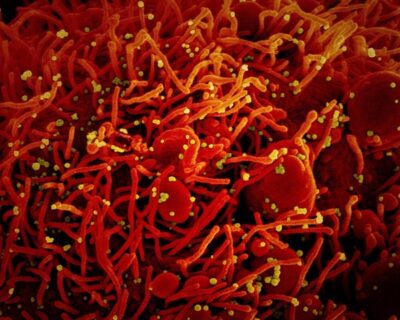
Excruciating cluster headaches often misdiagnosed
A headache is a painful sensation in any part of the head and can have a multitude
of causes that are not necessarily due to underlying illness. They result from signals interacting among the brain, surrounding nerves, and blood vessels.
The most excruciating and painful type of headache is a cluster headache. The condition is more than just a headache, but a severe neurological condition. Some patients may have suicidal thoughts that accompany their attacks, hence the name “suicide headache.”
In a study published in the British Journal of General Practice, a team of researchers from the University of York, King’s College London, Ghent University and Keele University found that many patients are forced to wait a long time to have their cluster headache correctly diagnosed and treated.
What is a cluster headache?The National Health Service (NHS) defines cluster headaches as excruciating bouts of pain in one side of the head, which is often felt around the eye. Though rare, the condition is more common in men and tends to begin when they reach their 30s or 40s.
Around one in 1,000 people experience cluster headaches. It is an often-misdiagnosed neurological condition, which is as common as well-known disorders, such as multiple sclerosis and Parkinson’s disease.
The signs and symptoms include a very severe, sharp, and burning sensation of pain in one side of the head, red and watery eyes, a smaller pupil in one eye, sweating, congested nostrils, swelling of one eyelid, restlessness, and agitation.
The attack can last from 15 minutes to three hours and can occur several times per day.
Study findings
The research team aimed to explore the perceptions, experiences, and understandings of cluster headache among general practitioners (GPs) and neurologists in the United Kingdom. The team interviewed clinicians, and the transcribed interviews were analyzed using thematic analysis.
Among the 16 clinicians who participated in the study, eight are GPs, and eight are neurologists. There are four factors identified and analyzed – challenges with the cluster headache diagnosis, impact of cluster headache, challenges with treatment, and appropriateness of referrals.
Some of the clinicians who participated in the study were not aware of cluster headache. In contrast, others believed the headache is the same as “cluster migraine”, which causes sensitivity to light, severe headache, and nausea.
The team also revealed that doctors recognized the delays in the diagnosis of cluster headache, including misdiagnosis and mismanagement. Many patients will take years before they are diagnosed with the condition. The study also shows that patients face long delays and undergo unnecessary procedures and referrals before receiving the correct diagnosis and treatment.
“It [the delay] used to be nine-plus years, although still, it is around three to four years on average, for some it may be 20-plus years,” Dr. Fayyaz Ahmed, a consultant neurologist at Hull University teaching hospital and a co-author of the paper.
“For some patients we interviewed, it was many years. It often depends on the GP and how quickly the patient can be referred to. Many of the patients we interviewed thought they had migraines,” Prof. Lisa Dikomitis, a medical sociologist at Keele University who led the research, added.
Further, the findings of the study underscore tensions between primary and secondary care around the cost of medication and the remit of prescribing treatments.
Patients also experience undergoing unnecessary procedures in the hopes of relieving the excruciating pain. Occasionally, they undergo procedures such as sinus washouts, tooth extractions, and even intracranial surgery because they are in despair.
“Our study shows an urgent need to increase awareness of cluster headache among health professionals and the general public. This will prevent misdiagnosis and delays in diagnosis,” the team concluded.
“Clear referral and management pathways for primary headaches are required to improve patient outcomes and healthcare costs,” they added.
Impacts of cluster headache
Patients who have cluster headache attacks are greatly affected, with some experiencing mental health problems, such as depression, self-harm, and suicidal thoughts.
Cluster headaches may also affect the patient’s employment. Also, some employers, family, and friends do not understand the severity of the condition and the immense impact it has.
Sources:
Journal reference:
- Buture, A., Ahmed, F., Mehta, Y., Paemeleire, K., Goadsby, P., and Dikomitis, L. (2020). Perceptions, experiences, and understandings of cluster headache among GPs and neurologists: a qualitative study. British Journal of General Practice. https://bjgp.org/content/early/2020/06/01/bjgp20X710417





